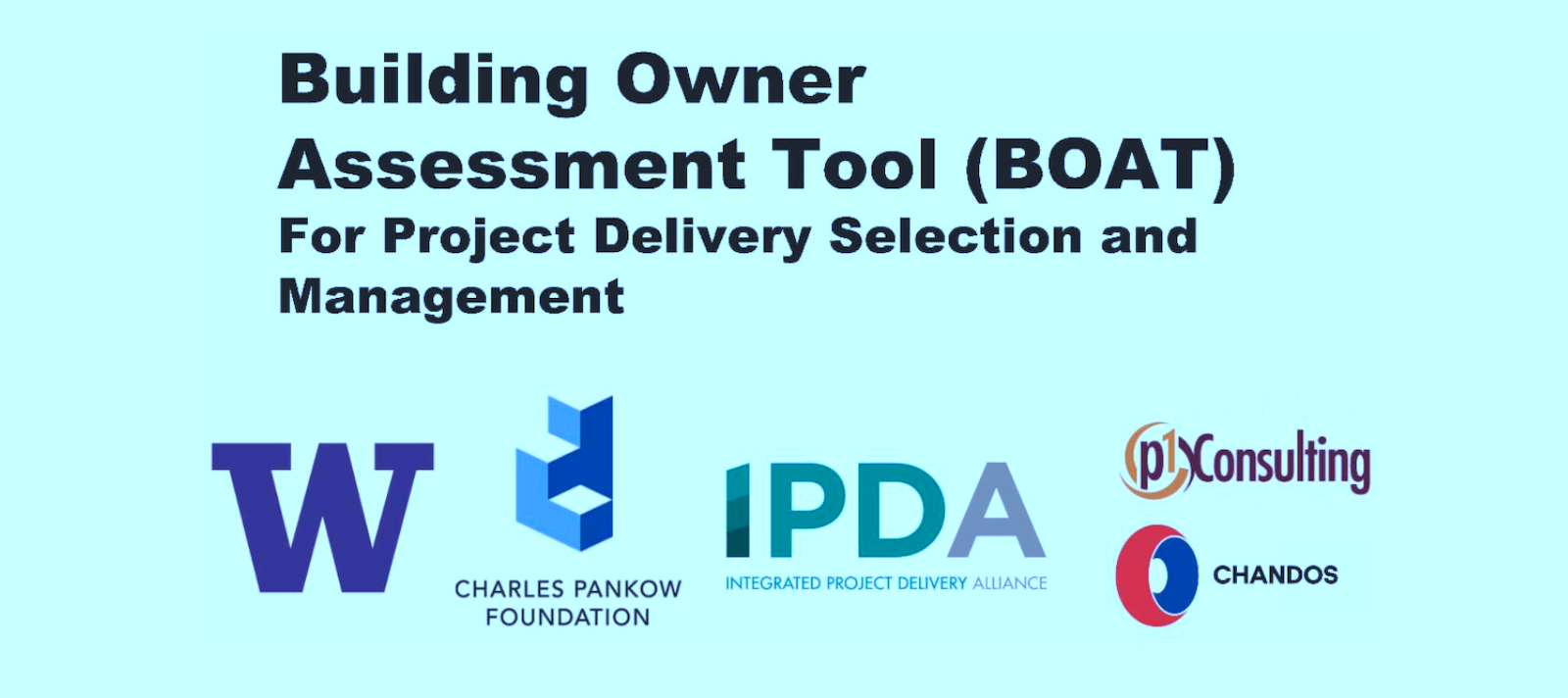The Charles Pankow Foundation (CPF) in partnership with the University of Washington's College of Built Environments, American Institute of Architects, and the Integrated Project Delivery Alliance, has unveiled a new tool, the Building Owner Assessment Tool (BOAT).
The free online tool helps building owners and project teams understand the challenges and alignments between their decision-making profile and different types of project delivery methods. Profiles are generated from rigorously researched questions and the analysis is presented in a simple spreadsheet format.
Using BOAT, building owners can reflect on their decision-making structures, cultures, and project management strategies and work with their project teams to mitigate roadblocks and pain points during project delivery.
Discussion of BOAT results fosters productive collaborative conversations identifying organizational challenges, setting expectations around the work, and designing specific processes to address challenges.
This research was conducted at the University of Washington and led by Principal Investigator Carrie Sturts Dossick, Ph.D, P.E.; Co-investigators Renée Cheng, FAIA; and Laura Osburn, Ph.D. Other team members included Lingzi Wu, Ph.D., Daniel Dimitrov, and Xianxiang Sean Zhao. Industry Champions were Markku Allison, Greg Gidez, Louise Pannetor, and Laura Stagner. Support was provided by Chandos Construction and P1 Consulting.
Related Stories
| Mar 14, 2012
Hyatt joins Thornton Tomasetti as VP in Chicago
A forensic specialist, Hyatt has more than 10 years of experience performing investigations of structural failures throughout the U.S.
| Mar 14, 2012
Tsoi/Kobus and Centerbrook to design Jackson Laboratory facility in Farmington, Conn.
Building will house research into personalized, gene-based cancer screening and treatment.
| Mar 13, 2012
China's high-speed building boom
A 30-story hotel in Changsha went up in two weeks. Some question the safety in that, but the builder defends its methods.
| Mar 13, 2012
Commercial glazer Harmon expanding into Texas
Company expanding into the Texas market with a new office in Dallas and a satellite facility in Austin.
| Mar 13, 2012
Worker office space to drop below 100-sf in five years
The average for all companies for square feet per worker in 2017 will be 151 sf, compared to 176 sf, and 225 sf in 2010.
| Mar 12, 2012
Improving the performance of existing commercial buildings: the chemistry of sustainable construction
Retrofitting our existing commercial buildings is one of the key steps to overcoming the economic and environmental challenges we face.
| Mar 7, 2012
Firestone iPad app offers touch technology
Free app provides a preview of Firestone’s Roots to Rooftop Building Envelope Solution with an overview of all the products from ground and stormwater management solutions, to complete wall panel and commercial roofing system applications.
| Mar 7, 2012
LEO A DALY opens new office in Riyadh, Saudi Arabia
Jay N. Kline, Regional Manager – Saudi Arabia, to lead new office.















